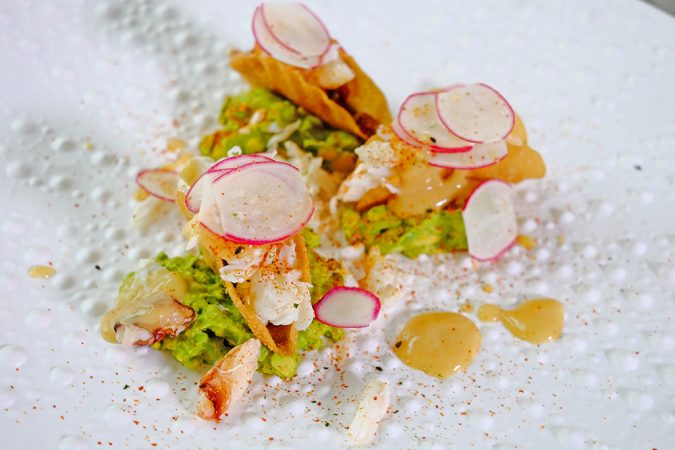Former Four Seasons chef transitions easily to advocacy role, promoting Ocean Wise recommendations
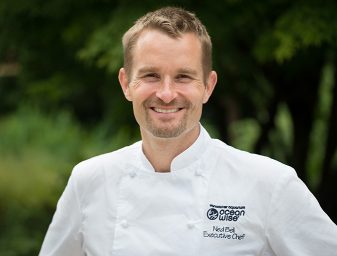 Two passionate chefs, whose perspectives on the merits of farm-raised fish evolved as the industry improved, delivered support – and even thanks – to the audience at the Global Aquaculture Alliance’s GOAL conference in Vancouver last year. In their dual keynote addresses, Ned Bell and Barton Seaver shared the view that sustainable fisheries and responsible aquaculture should each be embraced by their culinary peers.
Two passionate chefs, whose perspectives on the merits of farm-raised fish evolved as the industry improved, delivered support – and even thanks – to the audience at the Global Aquaculture Alliance’s GOAL conference in Vancouver last year. In their dual keynote addresses, Ned Bell and Barton Seaver shared the view that sustainable fisheries and responsible aquaculture should each be embraced by their culinary peers.
Bell, then at YEW Restaurant and Bar in the Four Seasons hotel in Vancouver, is now with the Vancouver Aquarium in an executive chef role that allows him to fully express the sustainable seafood advocate inside of him. (See Barton Seaver’s Off the Knife interview here.)
The affable chef says the new job is an “extraordinary opportunity” for him, as he’s been an ambassador for the Aquarium’s Ocean Wise program for 11 years – since its inception – and has supported Ocean Wise-recommended seafood in all the restaurants he’s worked in during that time. None made a bigger commitment to environmental stewardship than YEW, which positioned itself as a 100 percent sustainable seafood restaurant, serving only wild and farmed seafood products recommended by Ocean Wise.
The restaurant’s “hyper-focus” on sustainable seafood, as Bell called it, earned YEW customer loyalty as well as an increase in sales during his five-year tenure from $6 million annually to $10 million in 2015.
Two years ago, Bell rode his bicycle across his home country of Canada to engage his peers in the sustainable seafood discussion and enlist their help to bring about greater consumer awareness of the issue. At the Vancouver Aquarium, Bell will continue to travel around Canada, as well as internationally, to collaborate with working chefs while still having enough time to spend with his young family.
Ned, you proved that a restaurant serving only sustainable seafood can be purposeful and profitable.
Working for the Four Seasons was an incredible platform and opportunity for me to work for that brand and have some huge success with our seafood restaurant. When I took the restaurant over, they had decided to convert it from a normal, contemporary restaurant to a seafood concept. They chose me to lead the program mainly because I have an expertise in seafood. I spent most of my career as a West Coast chef cooking seafood, be it in Toronto or Calgary, and really championing delicious, quality ingredients.
It was an extraordinary success, both critically as a top seafood restaurant in western Canada, and financially with that kind of growth, and all the while running a profitable business that managed to its targets with food costs and labor costs. That’s when I realized that you can do this – you can choose sustainable seafood and still run a great business and make money.
I don’t want to call it an experiment, but the realization that it was possible was really extraordinary for me. That’s what I spent the past bunch of years educating my peers on. People always say sustainable seafood is more expensive. I say, more expensive in comparison to what? We are addicted to cheap. When I chose to do sustainable seafood, 100 percent – and I don’t expect my peers to do it 100 percent – it allowed my customers to not have to think that much. They just knew that everything they ordered was from a well-managed fishery or from responsible aquaculture.
Ocean Wise has two ratings – “recommended” and “not recommended” – while Seafood Watch has three, “best choice,” “good alternative” and “avoid.” Do fewer options make the decision easier?
It’s often a conversation I have. Ocean Wise is of course based on the Seafood Watch stoplight system. I think the simpler it is the easier it is for chefs and retailers – it’s either Ocean Wise or it’s not. It’s not quite that simple in the world of seafood, but it’s easier for consumers and chefs unable to dive in too deep.
We’ve got to be afraid of racing of the middle and having that be good enough. Especially on the retail level. I’m here to protect the species, first, and then have great products that I can cook. I want to cook as much fish as I can, and to have people eating more fish, but I want them to be eating sustainable fish and responsible aquaculture.
Ned, is wild seafood easier for chefs to understand than farmed? They both get pretty technical, depending on how deep you want to go, but are aquaculture terms and principles more of a mystery to chefs?
If I could start by quickly commenting from a consumer point of view: Living on the West Coast, we can be very passionate about farmed versus wild fish. The challenge there is a lack of knowledge about how much of our seafood is actually farmed – it’s like half of what is produced globally, in volume. Most consumers would be surprised to actually know that and really know what fish farming truthfully is, whether it be finfish or shellfish, open net pens or closed-containment systems. Farmed fish is an incredible commodity, an incredible resource and obviously a very necessary one.
Most chefs, I have to admit, are still a bit undereducated when it comes to seafood. They’re as much deer-in-the-headlights sometimes as consumers are. The difference is that chefs are very curious and they’re interested in learning. That’s the thing about cooking; we’re always learning throughout our careers. I talk to chefs about where we’ve come with fish farming in the last 30 years and where we’re going to go in the next 10 or 50.
But also we talk about what responsible aquaculture is. We’re doing great work, trying to connect chefs to knowledge that will give them the tools to make better choices on their menus for their hotels or their restaurants, and potentially educate their customers at the same time.
How would you rate your peers out there today with regards to their knowledge and the way they’ve adapted their behaviors?
The truth is, if I’m talking to the top 1 percent of chefs, they’re pretty knowledgeable. But if I’m talking to the large middle class of chefs, let’s say, most of them are fueled by a director of finance or the guy who writes the checks. They’re often told what to buy or to find food that’s as cheap as possible and if they run low food costs this month, or this quarter, they’ll maybe make a bit bigger bonus. Chefs have a family to raise and often don’t get paid great money, so I get that.
I would say they are doing a decent job but we need them to do a much better job in the next 10 years to have positive impacts on wild stocks and to educate their customers around the incredible importance of responsible aquaculture.
A survey GAA commissioned recently found that foodservice buyers and working chefs are behind retail buyers when it comes to environmental issues, sustainability and farmed seafood. Anecdotally, do you find that to be the case?
Yes, absolutely. Still, I don’t think that the man or woman at a seafood counter in a retail store knows anything about sustainable seafood, truthfully. I witness it all the time. You know, the guy stocking toilet paper last week is probably working the fish counter this week. That’s where the true importance of eco-labels lies, as well as proper business ethics, within the store. I don’t mean to criticize retailers, because they’re incredibly valuable resources in this conversation. Retail buyers know a ton, and counter staff and chefs often have purchasers, so they’re one step removed from the actual buying of the fish.
That’s why the supply chain is so important, because when chefs pick up the phone and order 50 pounds of salmon, very rarely are they buying a specific species, it’s just 50 pounds of salmon. I would say chefs are behind, definitely. They work 60 hours a week, not harder or more than anybody else, but they’re on their feet all day, they’re ordering food sometimes at 11:30 at night, they’re exhausted, they’re just trying to get it done because they have to be back in at 9 in the morning. It’s difficult for chefs to keep up on the knowledge and also run the business, and do their actual job, which is managing people and cooking food and trying to be creative at the same time.
Are you often criticized for your stances on sustainability?
I realize that I’m a polarizing figure within the culinary community, no different than Barton Seaver, Rick Moonen, Michael Cimarusti, or Dan Barber, these chef-advocates when it comes to sustainability. I’m trying very hard to stay in the middle of the conversation from an advocacy point of view, from a professional chef point of view – because my peers are crucially important to me – and from a knowledge point of view. That’s why I’m diving in as deep as I can. Also so I can delicately call out some of my friends and say, “Hey, you know those un-certified or not Ocean Wise-recommended tiger prawns? I can give you a couple of suggestions about some different prawns from producers that are really doing a much better job.” And often the chefs will say, “Thanks, I didn’t know.” They just don’t know the questions to ask.
Most consumers would be surprised to actually know what fish farming truthfully is, whether it be finfish or shellfish, open net pens or closed-containment systems. Farmed fish is an incredible commodity, an incredible resource and obviously a very necessary one.
Speaking of questions, let’s say you’re a chef trying to convince a skeptical guest that the seafood on your menu is “sustainable” or “responsible,” what assurances do you need to say that confidently? Who do you rely on for this information, your supplier?
First of all, I rely on my fishermen. Luckily, being on the West Coast, I get to be directly connected to a good percentage of them. Second of all, I rely on my network of suppliers. I have four, not just one. It’s another challenge – some chefs only have one or buy from one supplier only, for all ingredients, let along seafood-, meat- or dairy-specific. My suppliers are crucially important.
I don’t deal with retailers professionally but I do as a purchaser of fish in the market for home use. Luckily, we have great fish markets here of course, but as I experienced a bit in my journey across the country, the further you get away from a body of water, or especially the ocean, the less accessibility to great quality seafood there is. Then, obviously the farmed conversation becomes more relevant and the fresh versus frozen conversation becomes more relevant. I’m absolutely a fan of frozen seafood.
But yes, the supply chain, the Albions [Albion Farms & Fisheries] of this world are crucial to me as a chef, to know what’s available. And luckily, Ocean Wise sends out a monthly list about what’s on the seafood recommendations this month because some things come off and on the list.
Was there ever a dish, or a fish, that you had to remove from your menu but didn’t want to?
Gosh yeah, probably dozens. I remember specifically calamari being something I had to take off my menu, in the early days at the Four Seasons, because the Ocean Wise team asked me where it was coming from, and I told them, and they said it was no longer Ocean Wise, and I took it off the menu the next day. I could have found a substitute, but it was more important to me to take it off immediately and then find a substitute, which we did. But we never put it back on the menu in the same capacity. You know, shrimp is the most-consumed seafood in North America, so that is always a conversation. We have some wild species here in British Columbia for a few weeks or months a year, and you can buy them frozen most of the year. But farmed shrimp is what most of us are consuming. So that’s when I look for a brand like Ocean Mama or Selva.
The discussion around seafood is mostly about what to buy and what not to buy, based on environmental concerns. Which leaves the topic of nutrition by the wayside sometimes. Americans and Canadians need to eat more seafood. What’s your feelings about how to get people to eat more, or in some cases to simply begin to incorporate it into their diets?
First of all, we need to open peoples’ eyes to the simplicity of cooking fish. I want people to cook seafood once a week at home. That’s 52 meals a year. That’s step one. I find that when people go to restaurants they have no problem ordering seafood. Usually it’s crispy and deep fried, and I’d I love for them to expand their horizons down the food chain a bit and order sardines or mackerel, but that’s really a consumer who’s probably been eating seafood for five or seven or 10 years.
Depending on where you live, seafood is either on your menu at home or not. In the middle of Canada, just getting people to eat seafood once a week is step one. Getting them to cook it is step two. And then getting them to care about sustainability is probably step three.
I always tell people that eating wild seafood is an incredible privilege, it’s the last wild protein on the planet that we actually get to eat. But of course if you’re eating seafood 52 meals a year, then half of those meals are probably going to be farmed fish in some capacity. Instead of thinking of farmed fish as a four-letter word, why not look for an eco-label that explains its sustainability in some short-stroke capacity?
I eat chicken, I eat beef, I eat pork. I don’t eat a lot of it, I eat way more nutrient-dense vegetables than I do land-raised animals. It’s not for me to not support chicken farmers of cattle ranchers or even wild animals like elk, for that matter. I just want people to eat more fish because it’s better for them. It’s a clean protein, with lower calories, it fills your tummy up less, it allows you to fill your plate up with nutrient-dense plant-based ingredients, with a piece of sustainable seafood on top, garnished with some vinaigrette and some nuts – that’s a pretty damn good meal, and I want people to eat more like that instead of these massive chunks of animal protein and a scoop of mashed potatoes and overcooked vegetables. That’s another subject to talk about regarding the cost of sustainability: Do we really need to be eating 8 or 10 ounces of protein? Why don’t we fill the plate with nutrient-dense ingredients and eat only 4 or 5 ounces? I think our bodies will be thankful for it.
What lasting message were you able to drive home as you visited the various towns and cities across the country on your bike?
The No. 1-asked question I was asked, as I traveled the country, over 9,000 kilometers, was “What is sustainable seafood?” So I had to explain it in the simplest terms possible. I said, “It’s wild, well-managed fisheries and responsible aquaculture. We need fish farming, and it’s not a four-letter word.” Usually that would get peoples’ interest piqued. Then I would tell them to look for an eco-label like Ocean Wise, or MSC, and if you look for those labels you’re doing great things for the species and also for the ecosystem.
Author
-
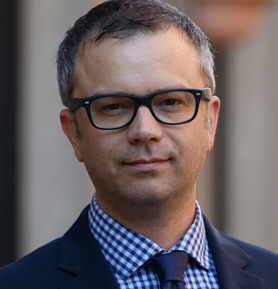
James Wright
Editorial Manager
Global Aquaculture Alliance
Portsmouth, NH, USA[103,114,111,46,101,99,110,97,105,108,108,97,97,103,64,116,104,103,105,114,119,46,115,101,109,97,106]
Tagged With
Related Posts
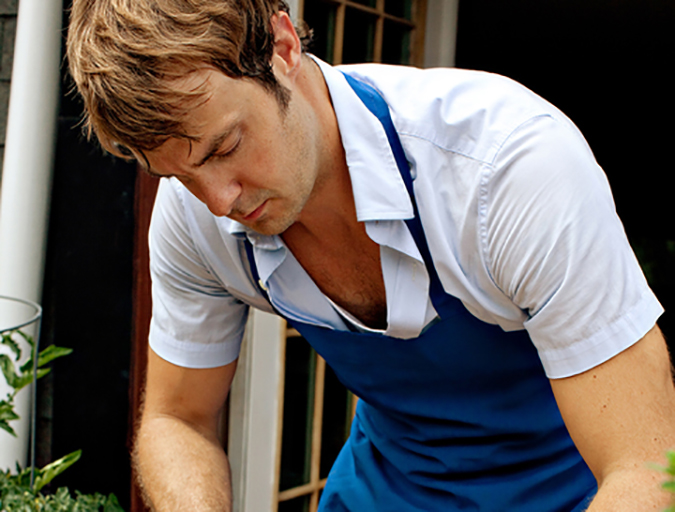
Intelligence
Off the Knife with Barton Seaver
In the second Off the Knife interview with chefs and foodservice professionals, Barton Seaver tells the Advocate that while restaurant employees shouldn’t have to recite sustainability science at tables, they can personalize their knowledge and effectively communicate the method behind the menu.

Intelligence
Off the Knife with Bruce Mattel, Culinary Institute of America
Our new interview series with foodservice professionals begins with Bruce Mattel, senior associate dean of culinary arts at The Culinary Institute of America (CIA). We’ll pry open the minds of some notable chefs who know seafood and are making statements about sustainability in their restaurants and beyond.
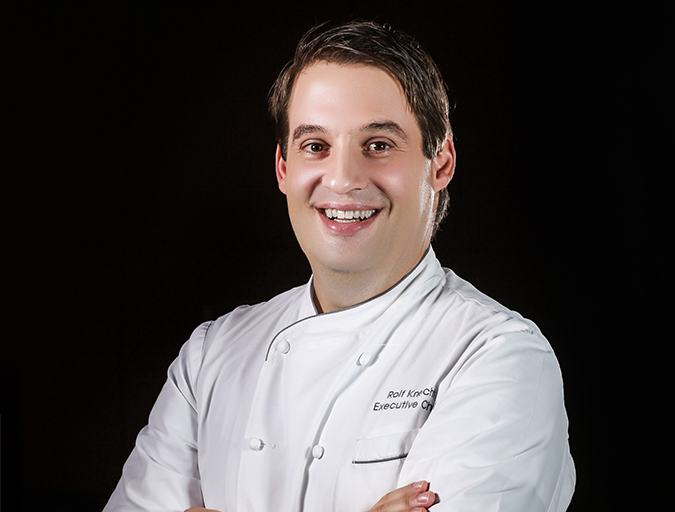
Intelligence
Off the Knife with Rolf Knecht, Grand Hyatt Shanghai
Ten years in China’s largest city have given Chef Rolf Knecht a solid perspective on the nation’s rapidly changing economy and the impacts on consumer food purchases. Knecht, who will speak during the GOAL marketplace roundtables, fields questions about seafood trends, certification and food safety.
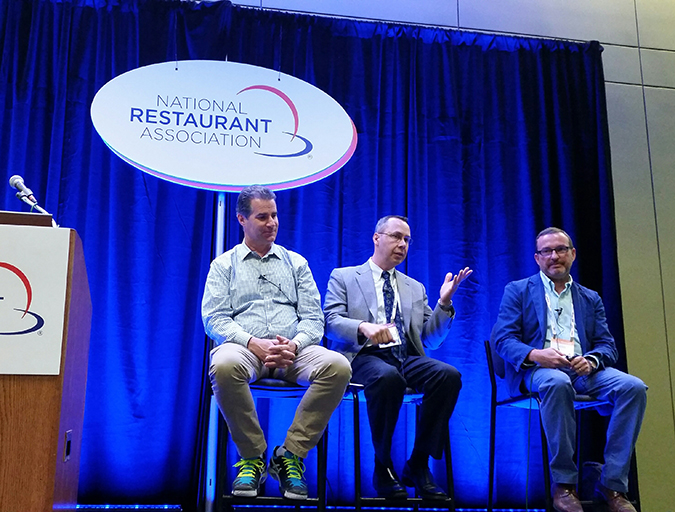
Intelligence
For chefs, a seafood information crisis looms
Ongoing research on foodservice professionals reveals ever-growing pressure on seafood suppliers to procure safe, sustainable and high-quality seafood and provide them with all the intricate information they may require. Chefs are pressed for resources and many lack the time to grasp this complex issue.


